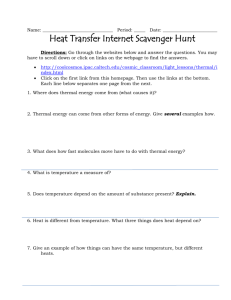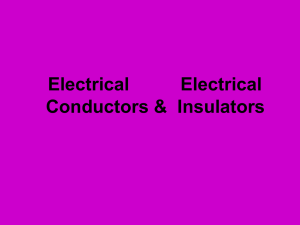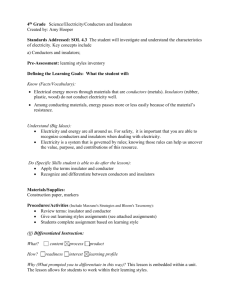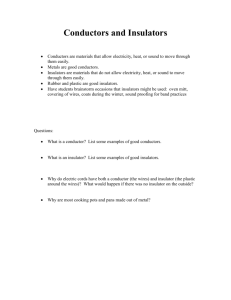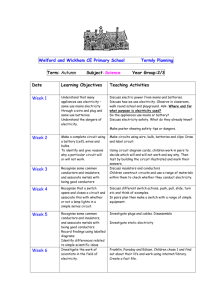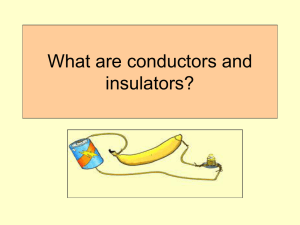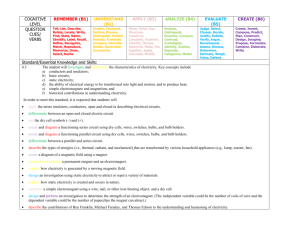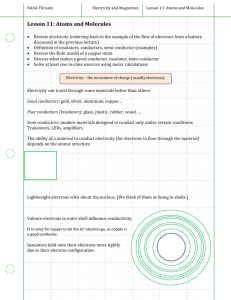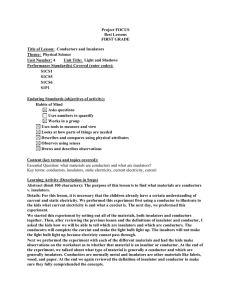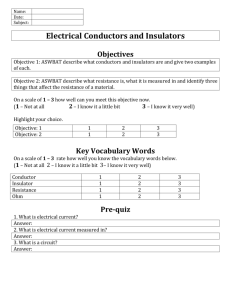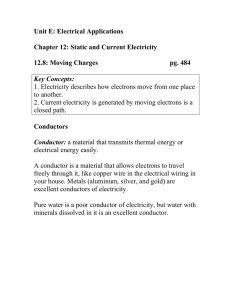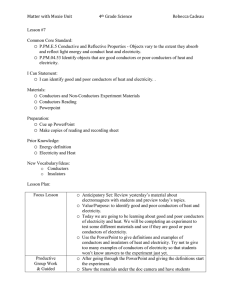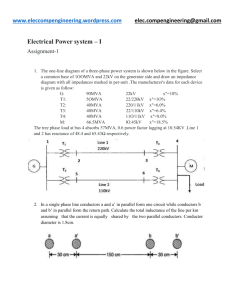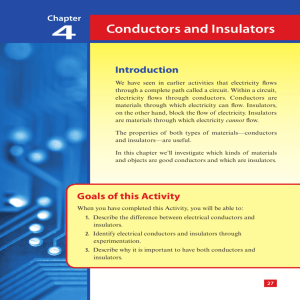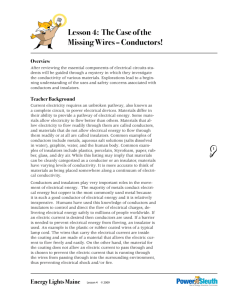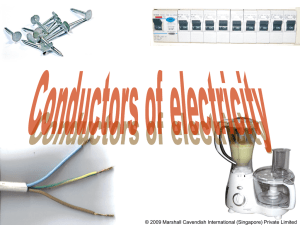CONDUCTORS AND INSULATORS
advertisement
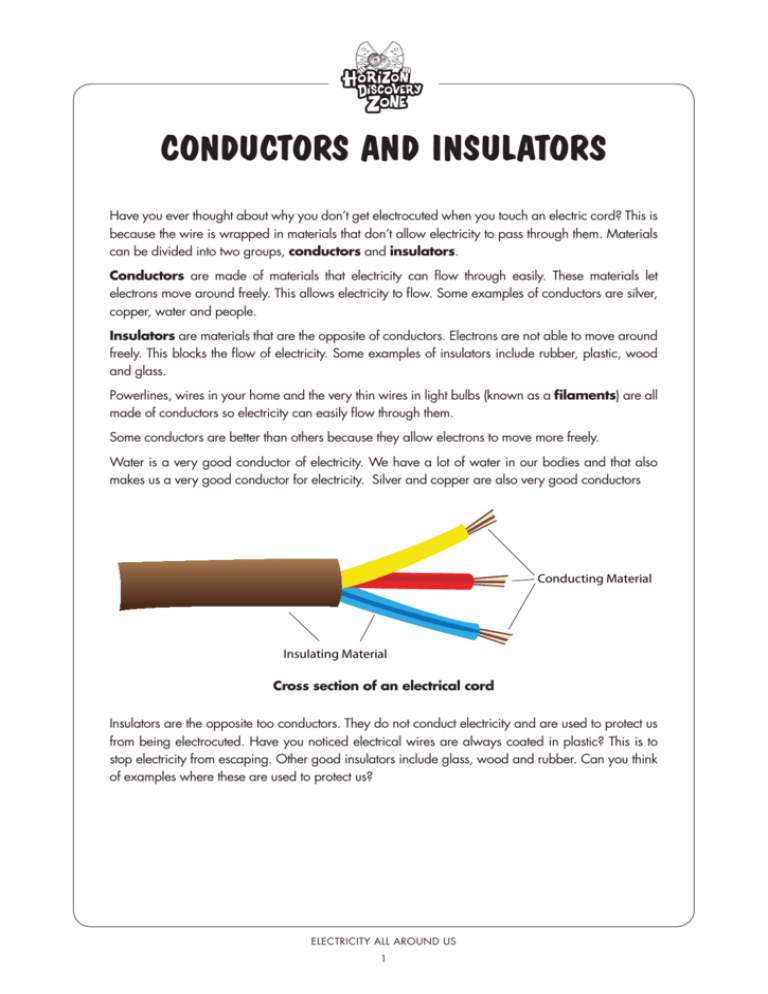
CONDUCTORS AND INSULATORS Have you ever thought about why you don’t get electrocuted when you touch an electric cord? This is because the wire is wrapped in materials that don’t allow electricity to pass through them. Materials can be divided into two groups, conductors and insulators. Conductors are made of materials that electricity can flow through easily. These materials let electrons move around freely. This allows electricity to flow. Some examples of conductors are silver, copper, water and people. Insulators are materials that are the opposite of conductors. Electrons are not able to move around freely. This blocks the flow of electricity. Some examples of insulators include rubber, plastic, wood and glass. Powerlines, wires in your home and the very thin wires in light bulbs (known as a filaments) are all made of conductors so electricity can easily flow through them. Some conductors are better than others because they allow electrons to move more freely. Water is a very good conductor of electricity. We have a lot of water in our bodies and that also makes us a very good conductor for electricity. Silver and copper are also very good conductors Conducting Material Insulating Material Cross section of an electrical cord Insulators are the opposite too conductors. They do not conduct electricity and are used to protect us from being electrocuted. Have you noticed electrical wires are always coated in plastic? This is to stop electricity from escaping. Other good insulators include glass, wood and rubber. Can you think of examples where these are used to protect us? ELECTRICITY ALL AROUND US 1
